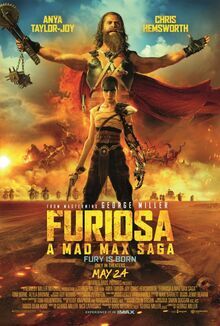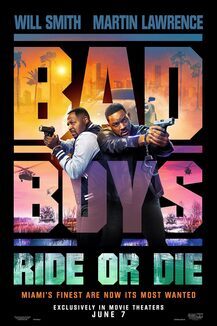Silent Night
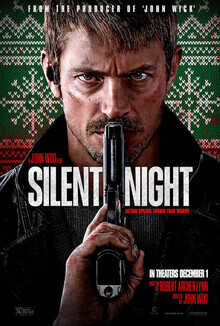
Silent Night
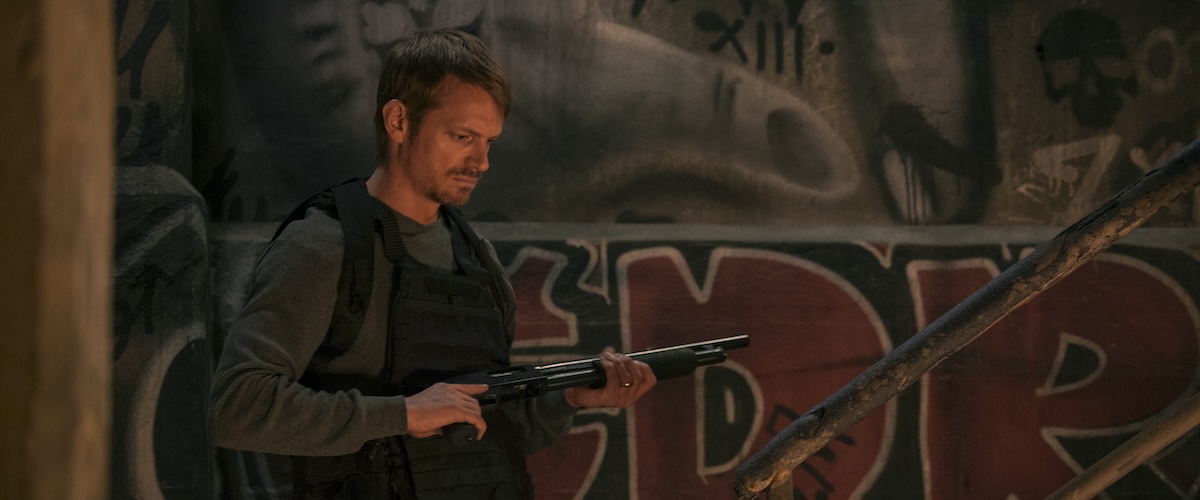
Now streaming on:
JustWatch
John Woo’s new film is a revenge thriller with such a predictable plot that one can imagine the first multicellular organisms distributing an electrochemical version of it to each other through osmosis. It’s also one of Woo’s best, and one of the most deliriously cinematic movies of the year. If ever there were a movie that demonstrated the idea that the telling matters more than the tale, it’s this one.
The movie is called “Silent Night,” and it’s set at Christmas, which is when the main couple (Joel Kinnaman and Catalina Sandino Moreno) lose their only son to a stray bullet after a couple of cars full of rival gang members drive through their neighborhood while shooting at each other. But the movie’s title is unrelated to the same-named holiday carol. It’s called “Silent Night” because it’s a silent movie with sound.
Nobody speaks a full word of written dialogue. Characters grunt when they crash against a wall, get punched in the gut, or are struck by a car. They gasp or scream when they’re shot or tortured. You hear sound effects and soundscape noises throughout, such as wind, rain, footsteps, and traffic. There are pop songs with lyrics on the soundtrack, interspersed with long stretches of Marco Beltrami’s deeply felt, unabashedly melodramatic score. But nobody talks, as a regular person would. They exchange looks. Or, if they’re alone and contemplating something tragic or troubling, they’ll stare into space or down at their hands, lost in thought.
Not that they do this sort of thing constantly, mind you. Much of the time, they’re trying to kill each other, using guns, fists, feet, knives, explosives, cars, motorcycles, and everyday household objects. Or they’re conducting surveillance, drawing up plans, hardening their bodies, practicing lethal skills, and so on, because that’s the kind of movie this is: the kind where people let their actions do the talking.
I suspect people who don’t like the movie will say it is unrealistic or that its existence requires such continuous maintenance on the filmmakers’ part that the result is more distracting or alienating than engrossing. I have nothing to say to such people other than, “This movie is not for you.” The film’s dedication to its concept is the origin point for everything unique about it. The result of its thoroughness is an exercise in pure filmmaking. Picture plus sound plus music plus performance. The stuff that cinema is supposed to be made of.
To that end, “Silent Night” pays tribute to one of Woo’s greatest influences, operatic western director extraordinaire Sergio Leone, while pushing the master’s aesthetic further than Leone ever did. The film is sort of an inverted opera. Or a ballet with violence and intimations of violence in place of dance. The performers don’t speak, much less sing. But their faces and bodies do. The purity of emotion they communicate is disarming, unique, and—if you surrender to the exercise—unexpectedly moving.
What is the story? As I said, there isn’t much to describe in terms of events, and there are no subversions, critiques, or out-of-nowhere twists awaiting you further down the road. Somebody kills a kid. The kid’s parents’ marriage breaks apart because the mom, Saya, wants to process her grief and move on, while the dad, Brian, becomes obsessed with transforming himself into a one-man army and avenging his son’s death exactly one year later. He trains and trains and trains some more. He teaches himself how to knife-fight by watching a video, hardens his physique with calisthenics and weights, and learns to shoot like Dirty Harry and drive like Jason Statham.
He also conducts surveillance on the gang leader responsible for the tragedy, Playa (Harold Torres), who has sold himself as a folk hero to some in the neighborhood, much like the gangsters played by James Cagney in crime thrillers from the 1930s and ’40s. Brian delivers the dossier to the police department, where only one detective, Scott Mescudi’s Detective Vassel, cares even a little bit. Does Brian want help? Not really. Mostly, he seems to want to prove that the guy he’s about to murder deserves to die.
The rest is in the details. The presentation. The action.
Screenwriter Robert Archer Lynn deserves credit for presenting this material in a way that drew Woo’s attention and captured it to the point where Woo got “Silent Night” funded and turned it into his first English-language film in twenty years. But I would tend to think the writer would agree that there’s nothing fresh here in terms of narrative, except perhaps for the way the script roots the main couple, their fellow citizens, the police, and the local criminal gangs in the mundane details of ordinary life, even as it conjures a sort of Neo-film-noir or adult comic book universe around them—the kind where a bad guy and his gang live in a Batman villain-looking factory tower with a giant neon sign, packaging their drugs and counting their money and injecting heroin into young women’s arms, and where the gang and their rivals can shoot at each other with automatic weapons while drag-racing.
From the very 1980s racial coding (the bad guys are tattooed Latins, the detective a straight-arrow Black man, and the vigilante an aggrieved white dude) to the ludicrous maximus car-chases-with-shootouts, “Silent Night” sometimes feels like a turbocharged cousin of a decadent “Death Wish” sequel like “The Crackdown.” Other touches channel R-rated comic book flicks like “Sin City” and superhero-adjacent crime thrillers like the John Wick movies and “Nobody” (both of which would not exist without Woo). The actors all seem determined to play the absolute best version of the hokey part they’ve been handed, whether it’s Moreno etching the standard-issue fed-up wife until it becomes a portrait in grief or Torres carrying on as if he’s been cast as Nino Brown in a modern dance adaptation of “New Jack City,” glowering his way through entire set-pieces.
Woo has always had a knack for choreographed bloodletting and destruction, but while it would be wrong to claim he’s going for subtlety here, there’s something more focused and intimate about how he stages it all. It’s John Woo unplugged. Individual shots are stunning not because they seem huge and expensive and complicated but because of how they’re set up and executed and the amount of time they’re put onscreen (always just the right amount, somehow!) as well as for the cinematic equivalent of what a painter would term “the brushwork.” The latter is particularly striking in the many God’s-eye-view images that follow cars and people through the city and show violence as a work-in-progress (like the shot of the black tar arcs left on the sidewalk of a truck depot where Brian works on his precision driving); or as an event that abruptly concluded and left a mark on the universe (such as an overhead tableau of Brian and one of his just-vanquished adversaries in a wrecked kitchen).
The cast appears to have trusted Woo and jacked into his wavelength. Moreno and Kinnaman seem to be pulling things out of their guts that they didn’t realize were in there. Some of the shots of characters grieving are difficult to watch because the performers are emotionally naked, not protecting themselves. When grief gives way to fear or rage, the effect is volcanic. Combine the actors’ efforts with Beltrami’s score, which runs through probably eighty percent of the running time, and Woo’s conductor’s-baton pacing, and you’re looking at a river of feeling that never stops flowing.
Woo and his editor Zach S. Staenberg (who cut the “Matrix” films) have that increasingly rare gift for transitions that don’t just move the story along but create a metaphor or simile or analogy, reminding viewers that movies aren’t merely puzzles to be solved or texts to be skimmed, but poems or songs or expressionist art. Consider the cross-cut montage early in “Silent Night” that alternates Brian sinking deeper into his mania and Saya simultaneously realizing she will have to leave him. A tight close-up of Saya follows a tear as it appears in the corner of her eye, rolls down her cheek, hangs briefly on her face, and falls out-of-frame; then the movie match-cuts to a shot of a bullet clinking on the floor at a shooting range where Brian is practicing. It’s surprising, strange, and perfect. There are probably two dozen moments like this in “Silent Night,” where the movie shows you something you’ve never seen before in a way that would be called audacious if Woo’s technique weren’t so elegant and assured.
The cliches of the action/revenge movie ultimately stop seeming merely familiar and begin to feel ritualistic, like passages from the Old Testament or lines from an epic (or an incantation). The simplicity of it all verges on simple-mindedness sometimes. That’s inevitable. It’s baked into the nature of the thing. This kind of film communicates innocence by having the hero carry around the destroyed guts of a wind-up toy that still plays its plaintive melody; that’s how John Woo rolls—remember the sweet little boy in “Face/Off”?—and it’s what “Silent Night” needs. Movies like this don’t work unless the people who made them aren’t afraid to risk going too far. Some of the greatest operas and pop songs take that risk, pushing beyond what’s usually considered good judgment or good taste without fear of giving offense or embarrassing themselves. Sometimes, if they keep pushing and pushing, they overcome any supposed rational objections the viewer might have, and there’s a breakthrough. The floodgates open, and the feeling that pours forth is magnificent, rare, and sublime.
That’s “Silent Night.” Woo is a virtuoso. This movie is music.
Now playing in theaters.

Matt Zoller Seitz
Matt Zoller Seitz is the Editor at Large of RogerEbert.com, TV critic for New York Magazine and Vulture.com, and a finalist for the Pulitzer Prize in criticism.
Now playing

Great Absence
Brian Tallerico
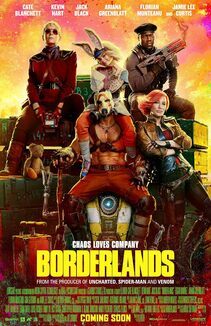
Borderlands
Brian Tallerico
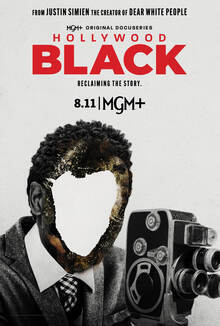
Hollywood Black
Robert Daniels
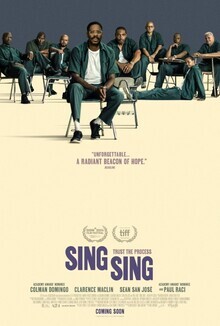
Sing Sing
Matt Zoller Seitz
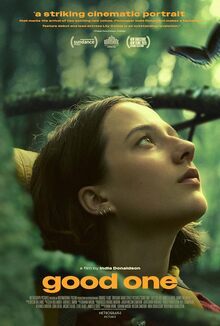
Good One
Sheila O’Malley

Hollywoodgate
Brian Tallerico
Film Credits
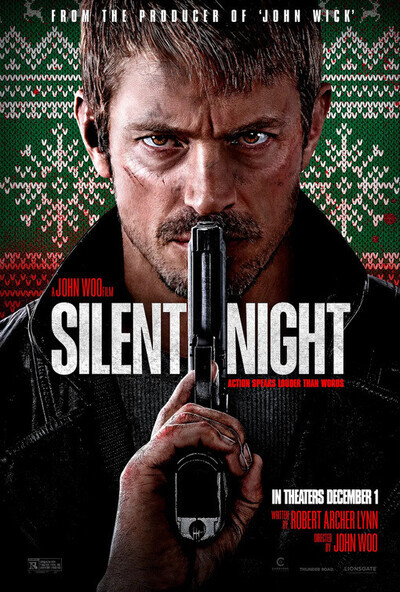
Silent Night (2023)
Rated R
104 minutes
Cast
Joel Kinnaman
as Godlock
Kid Cudi
as Detective Dennis Vassel
Harold Torres
as Playa
Catalina Sandino Moreno
as Saya
Vinny O’Brien
as Anthony Barello Esq.
Director
- John Woo
Writer
- Robert Archer Lynn
Original Music Composer
- Marco Beltrami
Editor
- Zach Staenberg
Director of Photography
- Sharone Meir
Producer
- Lori Tilkin
Latest blog posts

Locarno Film Festival 2024: Youth (Hard Times), Transamazonia, Moon
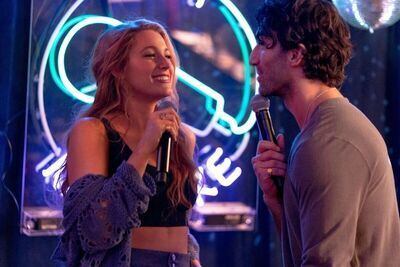
Thumbnails 8/15/24: Six Must-Reads You Don’t Want To Miss This Week

One Big Fortune: Remembering Corey Yuen

Female Filmmakers in Focus: Angela Patton and Natalie Rae
Comments
comments powered by Disqus
